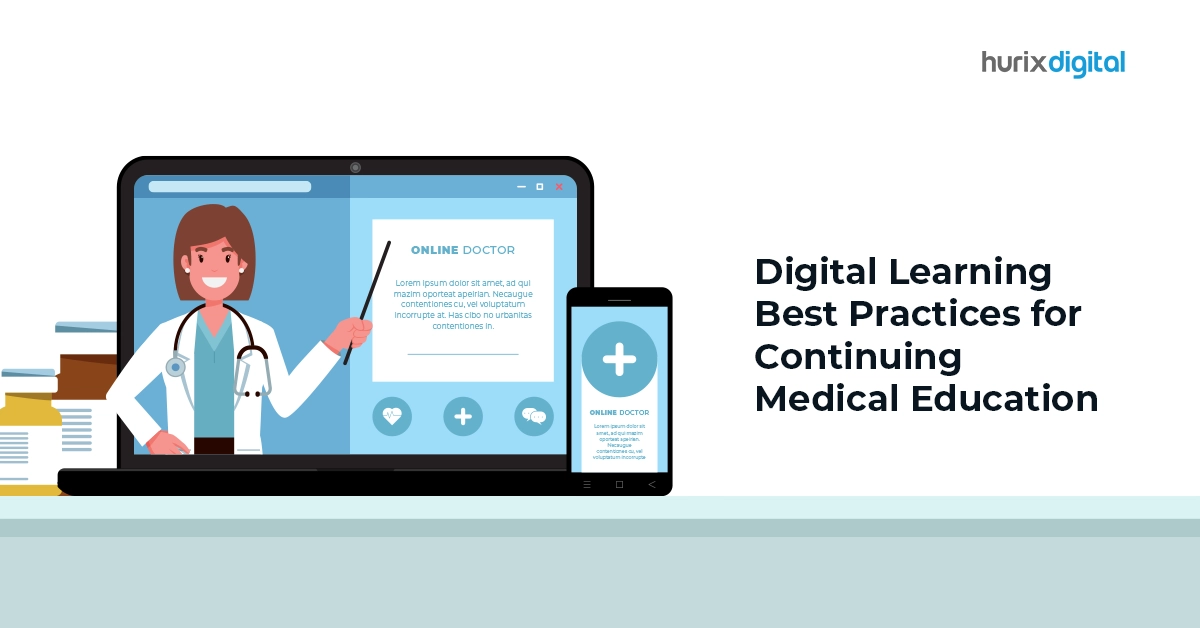Digital Learning: Best Practices for Continuing Medical Education in 2024
In the rapidly evolving landscape of healthcare, the pursuit of knowledge is an ongoing journey for healthcare professionals. With advancements in technology, digital learning has emerged as a powerful tool for continuing medical education (CME), offering flexibility, accessibility, and interactivity. In this blog, we’ll delve into the best practices for leveraging digital learning in CME, exploring its benefits and how it can enhance the learning experience for healthcare professionals.
Table of Contents:
- The Rise of Digital Learning in Medical Education
- What is Digital Learning in Continuing Medical Education?
- Why is Digital Learning Important in Continuing Medical Education?
- How Can Digital Learning Be Helpful in Continuing Medical Education?
- Conclusion
Introduction: The Rise of Digital Learning in Medical Education
The rise of digital learning in medical education marks a significant shift in the way healthcare professionals acquire and enhance their knowledge and skills. With advancements in technology and the increasing availability of online resources, traditional methods of medical education is being supplemented and, in some cases, replaced by digital alternatives. Digital learning offers several advantages over traditional classroom-based instruction, including flexibility, accessibility, and interactivity. Healthcare professionals can now access educational content remotely, at their own pace, and often in a more engaging format through online platforms, webinars, virtual simulations, and interactive modules. This flexibility allows learners to balance their education with their clinical duties and personal commitments, ensuring that they can continue their professional development without disrupting their busy schedules. Additionally, digital learning promotes accessibility by breaking down barriers related to geography and time constraints, allowing healthcare professionals in remote or underserved areas to access high-quality educational resources that may not be available locally. Moreover, the interactive nature of digital learning fosters active engagement and participation, leading to a deeper understanding and retention of knowledge. As the healthcare landscape continues to evolve, the rise of digital learning in medical education is poised to revolutionize the way healthcare professionals learn and grow throughout their careers.
Also Read: Blended Learning in Healthcare: Modern Approaches for Effective Training
What is Digital Learning in Continuing Medical Education?
Digital learning in CME refers to the use of electronic devices and online platforms to deliver educational content to healthcare professionals. This can include a variety of resources such as online courses, webinars, virtual simulations, mobile applications, and interactive modules. Unlike traditional forms of CME, which may require attendance at in-person seminars or conferences, digital learning allows healthcare professionals to access educational materials remotely, at their own pace, and often in a more interactive and engaging format.
Also Read: eLearning’s Impact on Healthcare Education: A Game Changer
Why is Digital Learning Important in Continuing Medical Education?
Digital learning is essential in CME for several reasons. Firstly, it offers flexibility, allowing healthcare professionals to engage with educational content on their own schedule and from any location with an internet connection. This is particularly beneficial for busy clinicians who may struggle to find time for traditional forms of CME amidst their clinical duties.
Secondly, digital learning enhances accessibility by breaking down barriers related to geography, time constraints, and physical limitations. Healthcare professionals in remote or underserved areas can access high-quality educational resources that may not be available locally, leveling the playing field and ensuring that all professionals have access to the latest advancements in medical knowledge and practice.
Furthermore, digital learning promotes interactivity and engagement through features such as quizzes, simulations, case studies, and discussion forums. These interactive elements not only reinforce learning objectives but also encourage active participation and critical thinking, leading to a deeper understanding and retention of knowledge.
How Can Digital Learning Be Helpful in Continuing Medical Education?
Digital learning offers numerous benefits for healthcare professionals participating in CME programs. Firstly, it provides personalized learning experiences, allowing individuals to tailor their educational journey to their own needs and preferences. Whether through self-paced modules, adaptive learning algorithms, or personalized feedback, digital learning enables healthcare professionals to focus on areas where they need additional support and skip over content they already know. Additionally, digital learning facilitates collaboration and knowledge sharing among peers. Through online forums, social media groups, and virtual communities, healthcare professionals can connect with colleagues from around the world, exchange ideas, and learn from each other’s experiences. This collaborative approach not only enriches the learning experience but also fosters a sense of community and camaraderie among participants. Moreover, digital learning supports lifelong learning and professional development by providing access to a wide range of educational resources beyond traditional CME programs. Healthcare professionals can explore new topics, stay updated on the latest research findings, and pursue specialized training in emerging areas of interest—all from the comfort of their own home or office.
Also Read: How Can Colleges Support Continuing Education?
Conclusion
In conclusion, digital learning has revolutionized continuing medical education, offering healthcare professionals flexible, accessible, and engaging learning experiences that align with their busy lives and diverse learning styles. By embracing digital learning best practices, healthcare organizations can enhance the effectiveness and impact of their CME programs, ultimately improving patient care and outcomes. If you’re ready to elevate your CME programs with cutting-edge digital learning solutions, consider partnering with Hurix Digital. Our comprehensive suite of eLearning services is designed to meet the unique needs of healthcare organizations, empowering you to deliver high-quality educational content that inspires, engages, and transforms. Contact us today to learn more about how Hurix Digital can help you unlock the full potential of digital learning in continuing medical education.

Senior Vice President – Business Development
Over 25 years of experience in the edtech and workforce learning industry with strong skills in Business Development, Customer Relationship Management (CRM) and Strategy.









